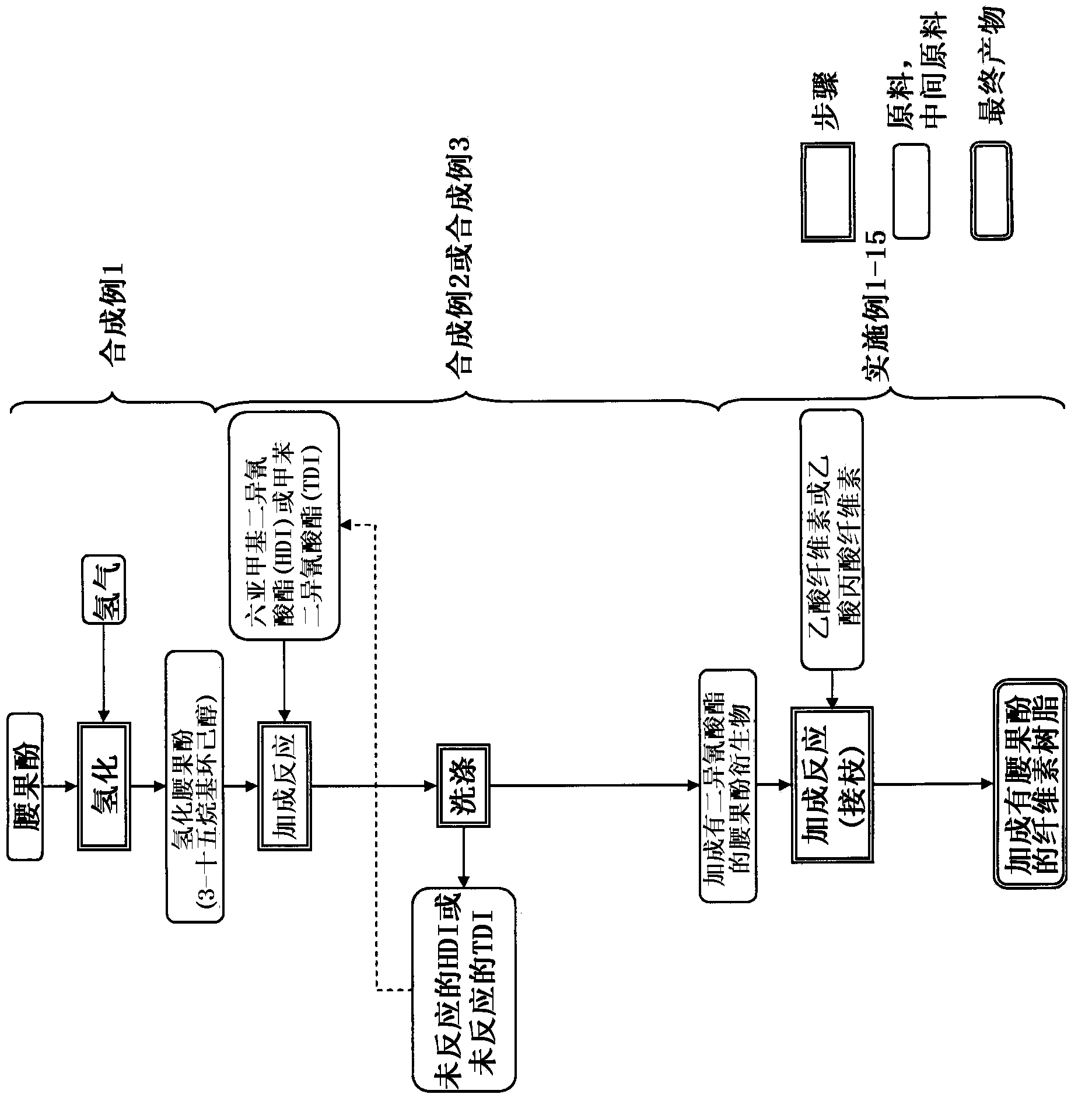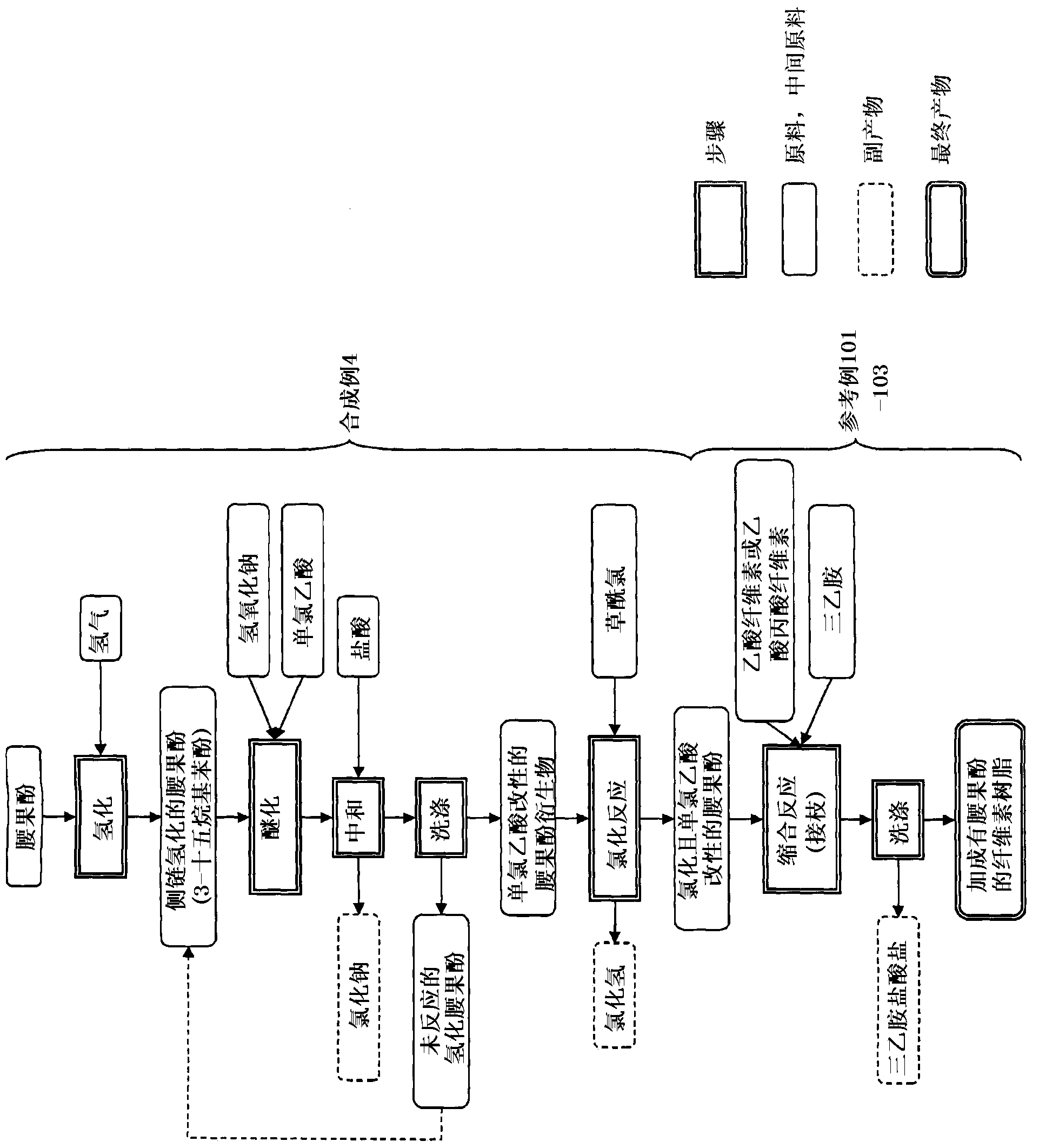Cellulose resin and method for producing same
一种纤维素树脂、纤维素的技术,应用在纤维素树脂及其制造领域,能够解决耐水性低、吸水性高等问题,达到色彩亮度改善、容易制造的效果
- Summary
- Abstract
- Description
- Claims
- Application Information
AI Technical Summary
Problems solved by technology
Method used
Image
Examples
Embodiment
[0166] Hereinafter, the present invention will be described more specifically by way of examples.
Synthetic example 1
[0167] [Synthesis Example 1] Preparation of Hydrogenated Cardanol (3-pentadecylcyclohexanol)
[0168] In a batch-type autoclave with an internal volume of 1.0 liter, put cardanol (20 g) obtained by distillation and purification of heat-treated cashew nut oil, 2 g of ruthenium / carbon catalyst (Ru: 5% by mass), and tetrahydrofuran (20 mL ) and at room temperature at 20kgf / cm 2 (1.96×10 6 Pa) Hydrogen was pressurized and stirred at 80° C. for 3 hours to carry out a hydrogenation reaction. Thereafter, the solution was taken out from the autoclave and filtered by using a membrane filter made of Teflon (registered trademark) and having an average pore diameter of 0.2 μm to remove the ruthenium / carbon catalyst. The obtained filtrate was treated under reduced pressure while heating to distill off tetrahydrofuran. As a result, hydrogenated cardanol (20.6 g) was obtained as a white solid at room temperature.
[0169] The purity of the obtained hydrogenated cardanol was measured by l...
Synthetic example 2
[0171] [Synthesis Example 2] Synthesis of Cardanol Derivative 1 Added with Diisocyanate
[0172] The temperature of hexamethylene diisocyanate (HDI) (84.5 g (0.50 mol)) was raised to 50°C while stirring. Hydrogenated cardanol (15.5 g (0.05 mol)) prepared in Synthesis Example 1 was added thereto and stirring was continued at 80° C. for 3 hours. After the reaction solution was cooled to room temperature, acetonitrile (300 mL) was added. The reaction solution was allowed to stand overnight in the refrigerator. Thereafter, the precipitated solid was separated by filtration and dried under vacuum, thereby obtaining a diisocyanate-added cardanol derivative in which HDI and hydrogenated cardanol were combined at a ratio of 1:1 as a white powder (18.2 g ( 0.04 mol)).
[0173] The obtained sample (cardanol derivative added with diisocyanate) was measured by liquid chromatography (product name: LC-10ADVP, manufactured by Shimadzu Corporation). The purity was 92% by mass.
[0174] I...
PUM
| Property | Measurement | Unit |
|---|---|---|
| particle diameter | aaaaa | aaaaa |
| pore size | aaaaa | aaaaa |
| particle diameter | aaaaa | aaaaa |
Abstract
Description
Claims
Application Information
 Login to View More
Login to View More - R&D
- Intellectual Property
- Life Sciences
- Materials
- Tech Scout
- Unparalleled Data Quality
- Higher Quality Content
- 60% Fewer Hallucinations
Browse by: Latest US Patents, China's latest patents, Technical Efficacy Thesaurus, Application Domain, Technology Topic, Popular Technical Reports.
© 2025 PatSnap. All rights reserved.Legal|Privacy policy|Modern Slavery Act Transparency Statement|Sitemap|About US| Contact US: help@patsnap.com



